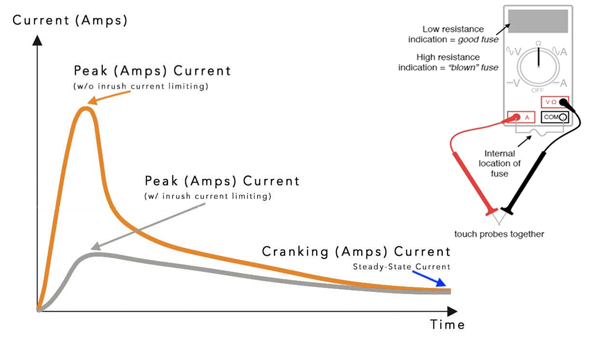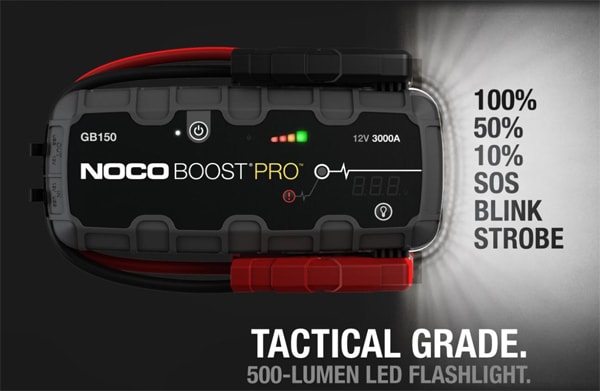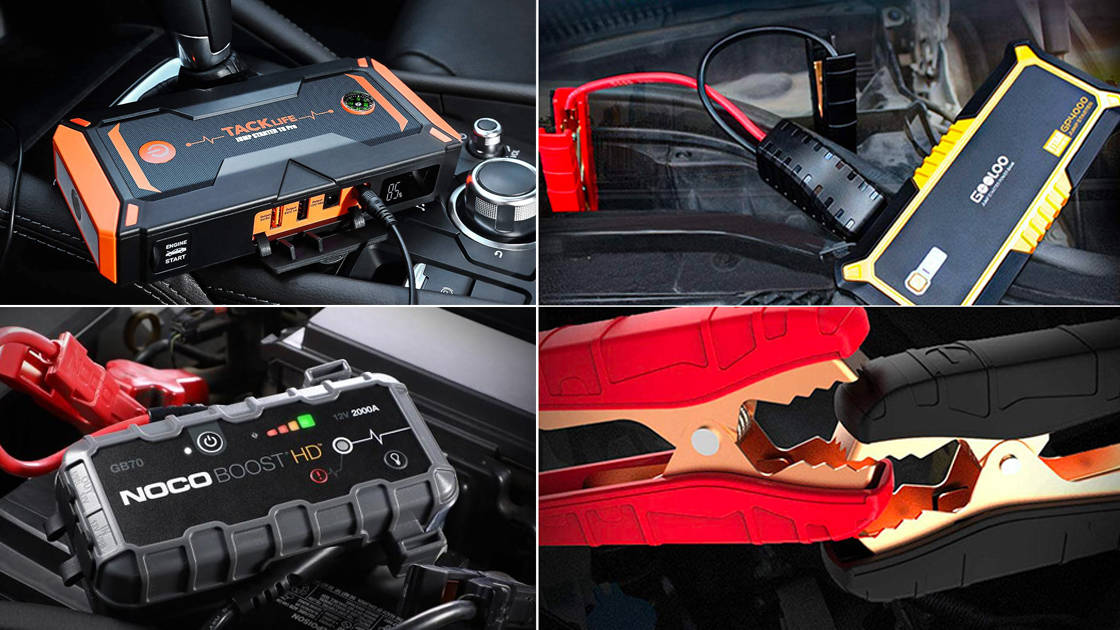Back in the old days, one needs to call for some roadside assistance when they need to jump-start their cars. However, things have changed thanks to the invention of jump starters. Humans of the modern age no longer need jumper cables and external motors to jump start your car anymore, as you can do so easily with a portable jump starter.
So, how did things turn out this way? As you may know, jump starters have been around forever, but they were too bulky for carrying around. Thus, jump starters were more fitting for auto recovery services and car dealers, not emergency tools in a car.
Then, the utilization of compact lithium-ion batteries became a popular choice for jump starter manufacturers. From then on, a new generation of much easier to carry jump starters has been flooding the market constantly. These devices are also capable of recharging portable devices like tablets or mobile phones.
On the other hand, getting smaller coupled with additional features means the new-gen jump starters are harder to use. Hence, there are many cases where people cannot figure out how to use the devices they just bought. That is why we create this jump starter buying-and-using guide for you.
What You Should Know Before Getting A Jump Starter
Charging blindly into a battle is never a smart move. In the same vein, buying something that you do not know the basics of can yield disastrous results. So, you should at least check some boxes before getting a jump starter.
Cranking Amps And Cold Cranking Amps
As we have mentioned, these days, there are so many additional features in a jump starter that you can forget its main purpose. At the end of the day, a jump starter is something that starts your car, so you need to know if it can do so. Technicians will say that you need to check the cranking amps value of the jump starter, but what exactly is it?
Cranking Amps, or CA, is the value measuring how many amps a particular jump starter can put out over 30 seconds at 32 °F or 0 °C. Of course, the jump starter must also maintain at the very least 1.2 volts for each cell. Thus, one can say that the cranking amps show how much power a jump starter put out to start the car in most climates.
Naturally, this value is not as great when you need to start your car in extreme weather. For example, people in Greenland, Alaska, etc. know that CA is completely useless, as these places rarely go over 0°C. Thus, we need another different measurement, the Cold Cranking Amps, or CCA for short.
Just like Cranking Amps, Cold Cranking Amps tells us how many amps a jump starter can produce over 30 seconds at 0°F, or -18°C. Essentially, this means how much power the jump starter can produce when the temperature drops with no sign of stopping. Hence, CCA is more important for people living in cold-climate zones as lead-acid starters can lose as much as half of their cranking power.
Peak Amperes
If you are interested in jump starters, we are sure that you must have heard the term “peak amps” being thrown around before. So, what is it?
Peak current, or peak amps, is the maximum value of electrical current a specific jump starter can initially discharge. Naturally, this discharge process happens in a very short time range. This peak current will then gradually normalize until it becomes the stable current, which we also call the cranking amps.

Peak Amps normalizing to Cranking Amps chart
Generally, any jump starter with a higher peak amp will be more powerful than one with a lower peak amp. In normal jump starters, peak amps range from 300 amps to 1000 amps. Of course, there are always outliers such as some exceptional jump starters sporting 3000 peak amps.
If a car battery requires less than the jump starter’s peak amps, the starter will typically discharge the lesser value. Thus, the battery will not likely wind up damaged.
Size Of Vehicle Engine And Size Of Jump Starter
Ultimately, you are buying a jump starter so that you can jump-start the car yourself in cases of emergency. Hence, it is only natural that you must pay attention to the starter’s size so that it can fit the car. Usually, the newer jump starter models are compact enough that this is a non-factor.
However, being compact means the jump starter must have sacrificed something, which, in most cases, is power. As we all know, a car engine requires unique power levels depending on the size. For instance, a small sedan only needs 150 CCA, while SUVs need around 450 CCA.
Thus, you may run into the problem of getting a jump starter that cannot work with your car’s engine. That is why considering both the size of your vehicle’s engine and the jump starter is so vital.
Age Of The Vehicle Engine
When we compare two similarly sized vehicles, it is almost always the older one that needs more amps to jump-start. For instance, an 8-cylinder engine that is 20 years old needs almost double the amount a brand-new 8-cylinder engine needs.
Essentially, this is thanks to having newer starter motors as well as many enhancements in engine design. Thus, if you have an older vehicle, it is always better to get something with more power available. After all, these days jump starters can automatically supply just enough power, so there is no need to worry.
Type Of Vehicle
You see, these days there are quite a lot of unique vehicles with different construction available on the market. As a result, these vehicles will utilize different types of batteries and these batteries need differing jump starters.
For instance, a golf cart’s battery only needs something lightweight with much less power than what a car battery needs. To be more specific, something like the NOCO Genius Boost HD GB70 Jump Starter can work perfectly for a motorcycle. However, it can be too powerful for a golf cart, which can be satisfied with an Arteck Jump Starter.
In the same vein, a truck can never be jump-started by a TACKLIFE T8 Car Jump Starter, despite it being the best for small and medium cars. Instead, it needs something much beefier like a Jump-N-Carry JNC1224 3400/1700 Peak Amp 12/24V Jump Starter.
Flashlight
Many people will surely be puzzled seeing this. However, there is actually a justifying reason, being that a flashlight will save you from a world of trouble in darkness. Basically, you are buying a jump starter for emergency use, and what is more emergent than needing to jump-start a car in total darkness?
Ultimately, a jump starter, especially a newer one, can be quite tricky to utilize properly. Thus, you can surely imagine how hard it will be to use them when there is no light. That is why we believe that there should always be a flashlight available on the jump starter itself.

NOCO Boost HD GB150 Jump Starter With Flashlight
Related:
- How Many Amps Is A Car Battery to Ramp up Your Engine?
- Big Question Of The Day: How Many Amps To Jumpstart A Truck?
- How To Use A Jump Starter: Detailed Guideline For The Unprofessional
A Beginner Guide To Using A Jump Starter
When we talk about jump-starting a car, it is imperative that you know as much as possible. There are numerous kinds of jump starters available on the market, and each of them has some small operating differences. So as not to get lost halfway through the process, you should at least know the basics of working with these machines.
Connecting The Wires
After completing the safety precautions, you will need to connect the wires to the poles so that the jump starter can work. To be more specific, you must connect the red wire of the starter to the positive terminal of the car battery. Also, you would want to ensure that there is no plastic covering the battery terminals.
Next, you need to connect the ground cable of the jump starter, which is almost always in black, to the negative terminal. Some manufacturers can leave a cable running straight from the car battery’s negative pole to the front engine bay. As a result, you can connect the ground cable easily.
In most cases, there should be some backup identifying marks such as the minus (-) and the plus (+) signs on the poles. Nonetheless, if you cannot be sure which pole is positive, you can check the owner’s manual.
Using 12-volts Connection
There are cases where the jump starter only has something like a 12-volt connector. Thus, instead of the above process, you only need to link that connector to the cigarette lighter of the car. All in all, this will require you to wait a little bit before the jump starter can do its job.
However, this approach has quite a strong advantage in the fact that it is much safer. Essentially, you will be jump-starting the car through your cigarette lighter. Hence, the power that trickles through the port will be quite faint and you will trade longer time for less chance of the battery exploding.
Of course, as the power will be quite weak, we recommend ensuring that the heater, light, and radio are all off. Also, the 12-volt plug (your cigarette lighter) should also be powered. You can do so by turning the ignition key until the first click.
Stay Safe!
Basically, when dealing with a jump starter, you will also be dealing with its complex components as well as electricity. Thus, you should at least be aware of safety precautions as well as the risks.
Safety Precautions
As always, the first thing that you should keep in mind is some basic precautions for your own safety. Jump starting a car, no matter if you use a portable starter or jumper cables, will always have some dangers.
Essentially, when you connect cables transferring high power to a battery, there will always be a chance of electric sparks forming. As a result, they can ignite any gas vapor that was present in the air. Hence, despite the fact that engines always smell of diesel as well as petrol, you should make sure that the air is not saturated by gas.
In fact, you can keep in mind this simple rule of thumb: once you start choking or coughing because of the smell, open the hood and leave the car to aerate for at least 10 minutes.
Afterward, you can continue with the safety check by making sure that your car’s ignition is off. Also, you need to be sure that the jump starter is in the off position. Then, you need to place enough rubber insulation over the area of the jump starter that you will need to touch.
Next, you should position the jump starter near your car battery securely so that there is no chance of it accidentally falling over.
Finally, you need to ensure that your jump starter’s cables are long enough so that they can easily reach the car battery. None of us want the cable to come off halfway, would we?
The Risks Of Car Battery Jump Starting
Of course, there would always be some risks accompanying the jump-starting process, namely damaging the vehicles and self-injuries. If you follow the safety precautions properly there would be no need to worry about them. However, we still believe that you should at least be aware of what can happen.
For instance, if you accidentally touch a jump starter’s metal parts attaching to the battery accidentally, you can get electrical burns or shock. Also, if you attach the cables to your car the wrong way, there is a serious risk of damaging your vehicle or even a battery exploding.
Luckily, most of the newer jump starters as well as modern jump starter cables have what we call polarity protection. With this feature, they can warn you or even stop working completely if you happen to connect the poles wrong.
FAQs
Why Can’t Jump Starters Work With Completely Dead Batteries?
Most of the new jump starter users make the mistake of using a weaker starter for a dead battery. In fact, the keyword for success here is getting the right cold-cranking amps. We recommend that you get something that has 500 CCA or more.
Can I Charge Many Cars On One Jump Starter Charge?
This depends greatly on the device’s specifications. We believe that a powerful lithium-ion 12V will be sufficient for the task. Nonetheless, you should still test if it can hold the charge over a long period of time.
Will This Jump Starter Be Enough For My Car Battery?
The bigger your vehicle’s engine is, the more CCA you are going to need to jump start it. For example, a 4-cylinder sedan will only need 150 CCA while an 8-cylinder truck requires 450 CCA. Thus, you should keep in mind the number of cylinders while choosing a jump starter.
Conclusion
We believe that it is vital that car owners can recognize the limitations as well as capabilities of their jump starters. Thus, we hope that you can acquire enough knowledge through this article to know which jump starter is fitting for your own vehicle.
WHAT'S NEW
The best AGM battery chargers will be the ideal option to revive your flat battery without relying on professional help. These handy high-tech chargers are extremely beneficial because they offer...
The Genius Boost GB40 is popular because of its ability to help boost your vehicle when it has battery issues. Many of our customers wonder why the Noco GB40 can work greatly like so. So, we have...


